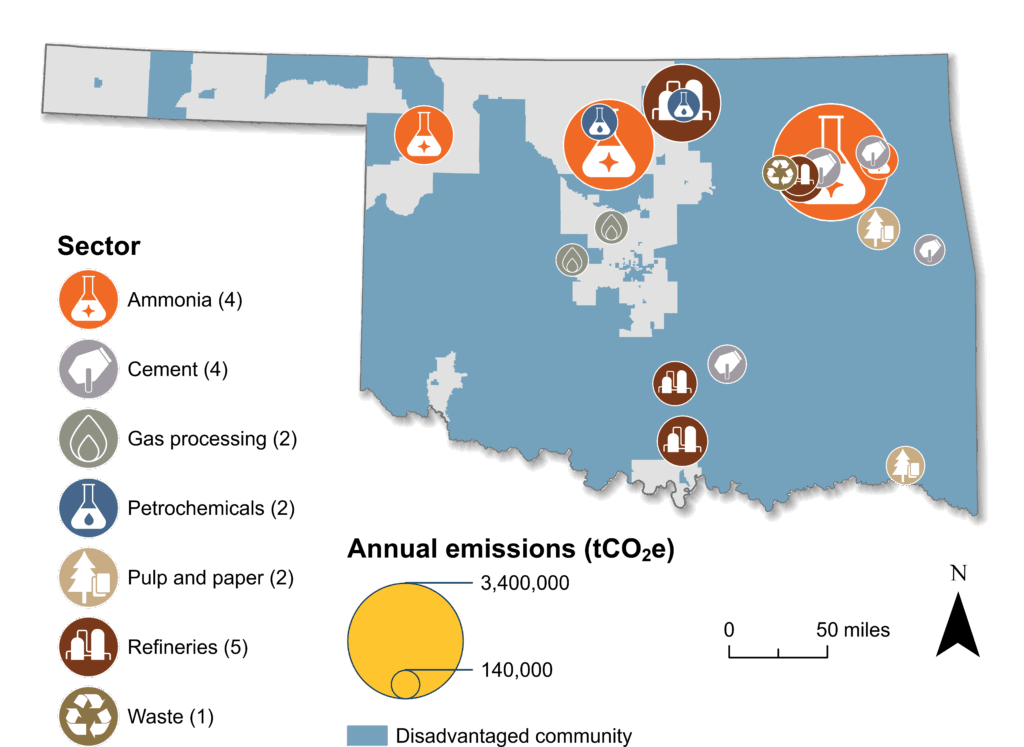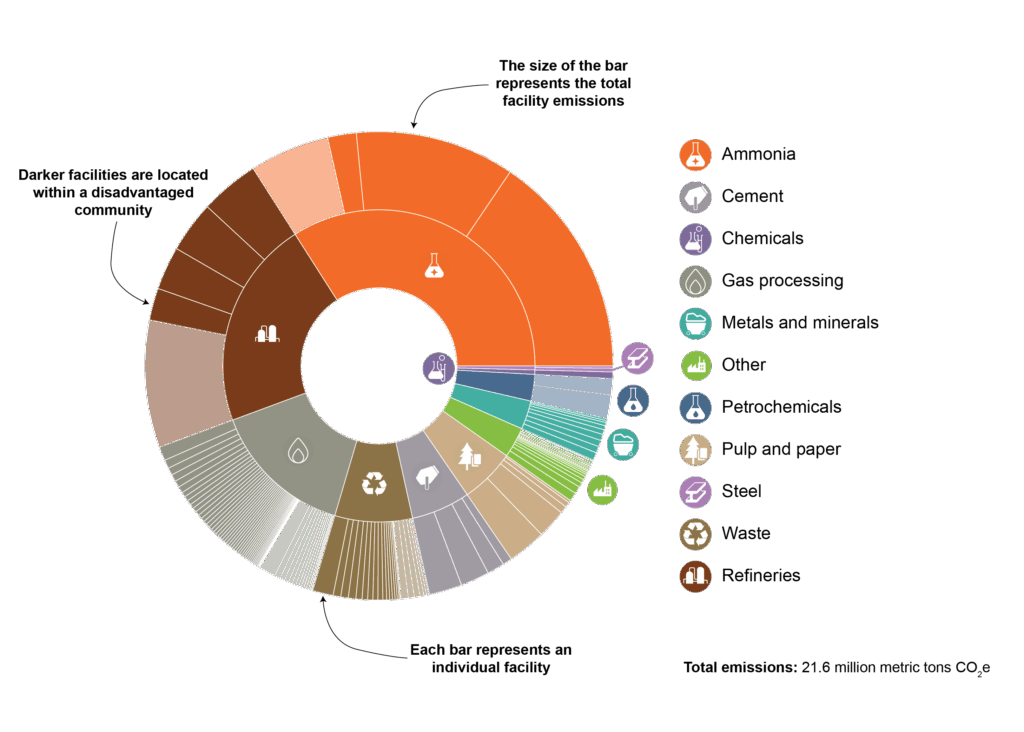Oklahoma
Oklahoma ranks among the top 10 states in industrial emissions. Excluding power plants, three-quarters of its industrial emissions come from three sectors: chemicals, refineries, and petroleum and natural gas systems. Most industrial production is concentrated in the Oklahoma City and Tulsa regions. However, petroleum and natural gas systems are scattered throughout the state.

- The top 20 emitters are shown on this map, coded by industrial sector. The size of the circles corresponds to emissions: the larger the circle, the higher the emissions.
- Disadvantaged communities (as determined by the federal government) are shaded blue.

- The inner circle provides a visual representation of the share of emissions generated by each industrial sector.
- The outer circle also indicates the share of a sector’s emissions generated in disadvantaged communities.
STATE ENERGY POLICY:
Considering a state’s broader energy policy landscape is helpful when developing policies to support industrial modernization. Oklahoma has not established greenhouse gas emissions targets or a clean heat standard. Oklahoma established a voluntary renewable energy goal in 2010 that expired in 2015. While these formal commitments are not prerequisites for innovative industrial policy, they can provide a supportive framework. In addition, streamlining permitting and establishing an efficient, transparent appeals process that engages local communities early while giving clarity and assurances to project developers are key components of effective state energy policy. Discussions around innovative industrial policy present an opportunity for broader conversations about state energy policy to ensure a mutually reinforcing strategy.
LEGISLATIVE context & opportunity:
Let us know if you are aware of additional legislation advancing industrial innovation in Oklahoma that should be featured. The context below is not exhaustive and serves as an example of recent policies and programs and where there may be future opportunities:
- A factsheet by the Renewable Thermal Collaborative identifies electrification of Oklahoma’s ammonia, soybean oil, and container glass subsectors as opportunities to reduce emissions significantly.
- Carbon management technologies are another opportunity to reduce industrial emissions in the state. Learn more about the economically feasible subsectors in Oklahoma and facilities that qualify for the federal 45Q tax credit.
Explore recent legislation in Oklahoma and all 50 states by clicking on a specific year: 2025 legislation, 2024 legislation, 2023 legislation.
